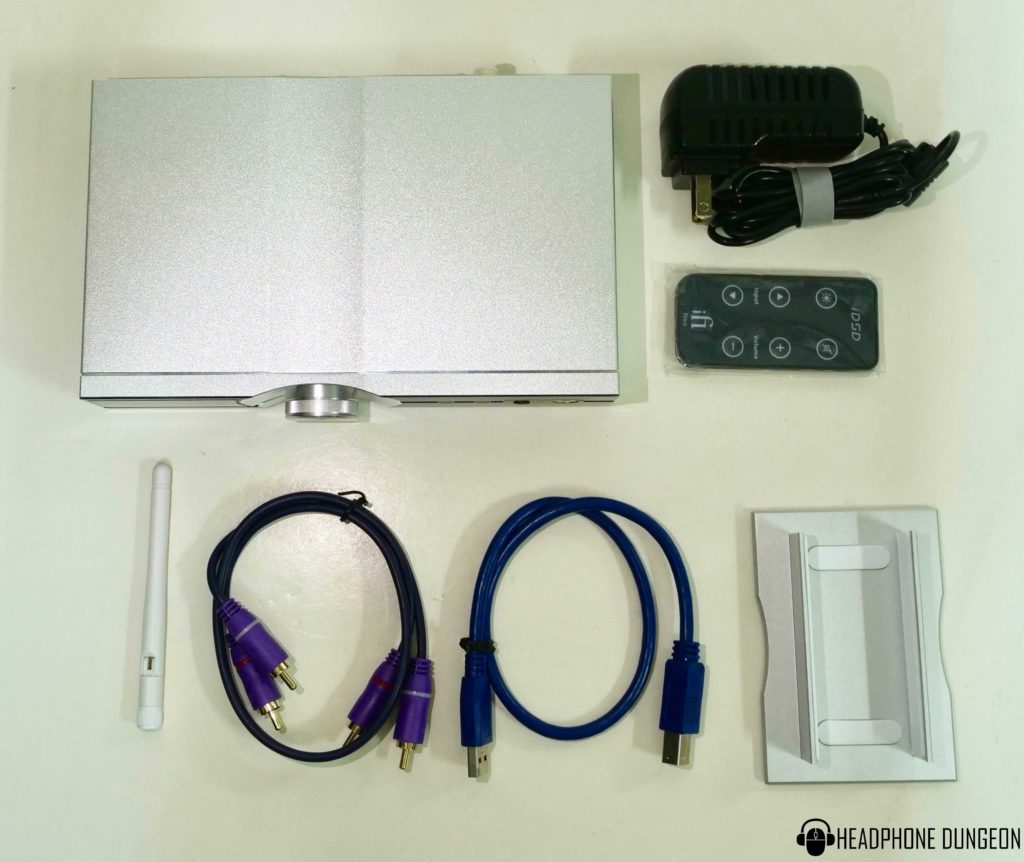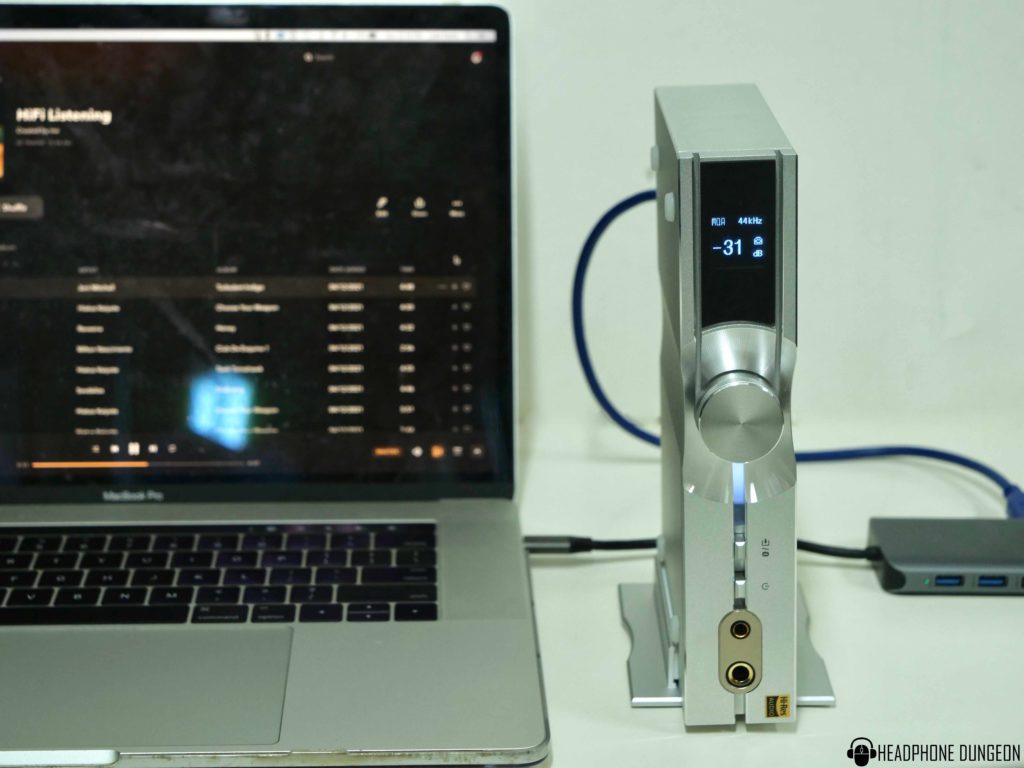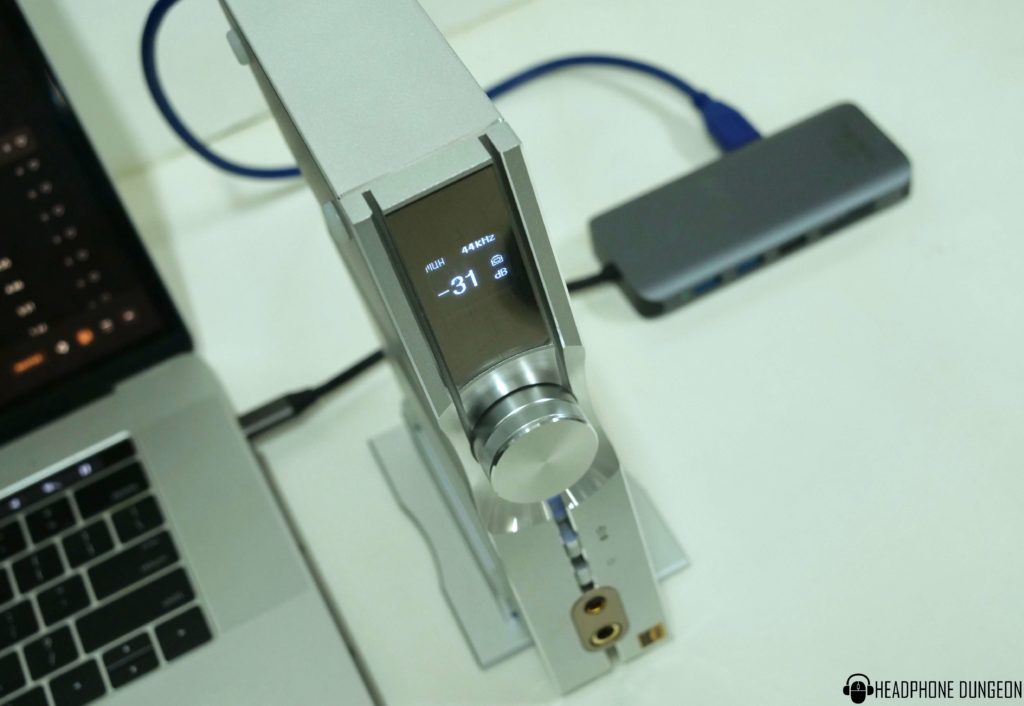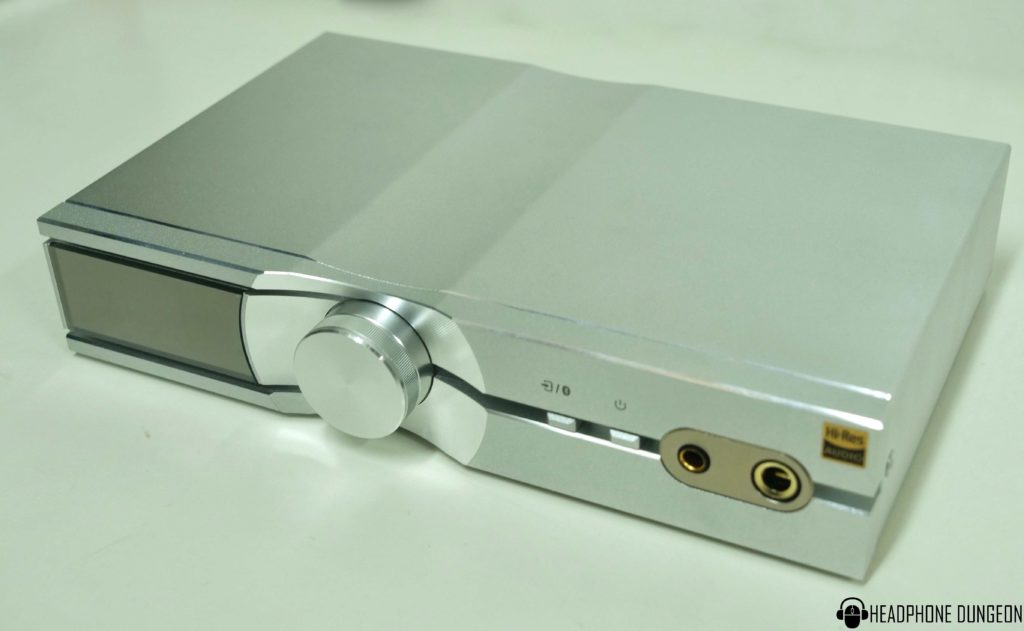iFi has gained a great reputation in the DAC/Amp world, and I’ve found myself crossing paths with many of their products. Their Neo iDSD may be one of their most physically striking DAC/Amps, with its reflective silver outside and space-age design. While we shouldn’t judge a book by its cover, iFi’s DACs and Amps I’ve used in the past have been beautiful inside and out. At $799, let’s see how the Neo measures up.

What’s in the Box
- Bluetooth Antenna
- RCA Cable
- USB Cable
- Power Cable
- Remote
- Stand Attachment

Look and Feel
The Neo’s sleek, silver body is about as high-tech and modern as it gets. Its large volume knob is just what you’d want to see on a luxury DAC/Amp, and its LCD screen displays audio format, sample rate, power output, and volume. With the option to stand it sideways using the included stand, the Neo can also work great with a compact desk setup. It’s fairly light weight and won’t add much bulk to your suit case if traveling, and was easy to move around while I rearranged my rats nest of wires (yes, I’m one of those people.)


Ins and Outs
Inputs:
- USB 3.0
- S-PDIF (Coaxial/optical)
- Bluetooth 5.0
- DC 5V/2.5A
Outputs:
- 6.3mm
- 4.4mm balanced
- Balanced XLR
- UnBalanced RCA

Design
The Neo is enabled with Bluetooth 5.0 and MQA decoding. While it can be used as a DAC/Amp, it can also work as just a DAC and be connected with an external amp. It contains a Burr-Brown DAC chipset, seen in some of iFi’s other DAC/Amps, such as the iDSD Diablo. It supports PCM up to 32-bit/768kHz, DSD up to 512, and DXDx2. It’s Bluetooth is upgraded with Qualcomm’s QCC5100 Bluetooth processing IC, supporting all Bluetooth audio formats and remembering up to 7 devices.
Sound Testing
I listened to primarily MQA files during this part of the review
Beyerdynamic DT1990 Pro
On these, the sound separation and high end felt vastly improved and clarified by the Neo. The 1990 Pro is already an incredibly spacious headphone, but the Neo seemed to get rid of any hint of cramping that may have been left. While there was of course not a night and day difference in the sound, the Neo seemed to push the immersive quality of the 1990 Pro just over a certain threshold that gave the listening experience a new level of realism. It felt like the full potential of these already-great headphones was unlocked.
Dan Clark Aeon Flow 2 Open
These are some of my favorite over-ears, so they’re a go-to for me with amp reviews. Similar to the DT 1990 Pro, the Aeon have extreme width and air as is. However, once again, the Neo introduced new levels of dispersal and engulfment to the sound. Listening to Lianne La Havas’ “Read My Mind,” I switched over to the Neo to see what difference it would make. Suddenly, the lofty backing vocals found a new, more comfortable space to fit, further away from the rest of the instrumentation. The silky mix felt like it was glistening with newfound purity.
Sennheiser HD660s
This is a classic headphone for many, so it felt worth taking for a spin on the Neo. I found the depth and detail was what got most improved on the 660. There was a bit more guttural, texturized feel to many of the tracks I listened to, namely on Joni Mitchell’s “Sex Kills,” which felt more defined and finely-sculpted with the NEO’s expert handling. The 660 felt like possibly one of the most successful pairings with the NEO, though I’m not sure any headphone could possibly make a bad pairing with it.
Overall
The Neo is more than just a pretty facade and will give noticeable improvement to sound quality in multiple areas, allowing you to get the most out of your favorite headphones. If you want subtle coloring and are craving some expanded dimensionality, the Neo has you covered. While it’s not the cheapest headphone amp on the market, after getting to use it for a while, the price tag begins to make sense.
Check out our comparison to of the iFi iDSD Neo and iDSD Signature
You can purchase the iFi Neo IDSD at Audio46

